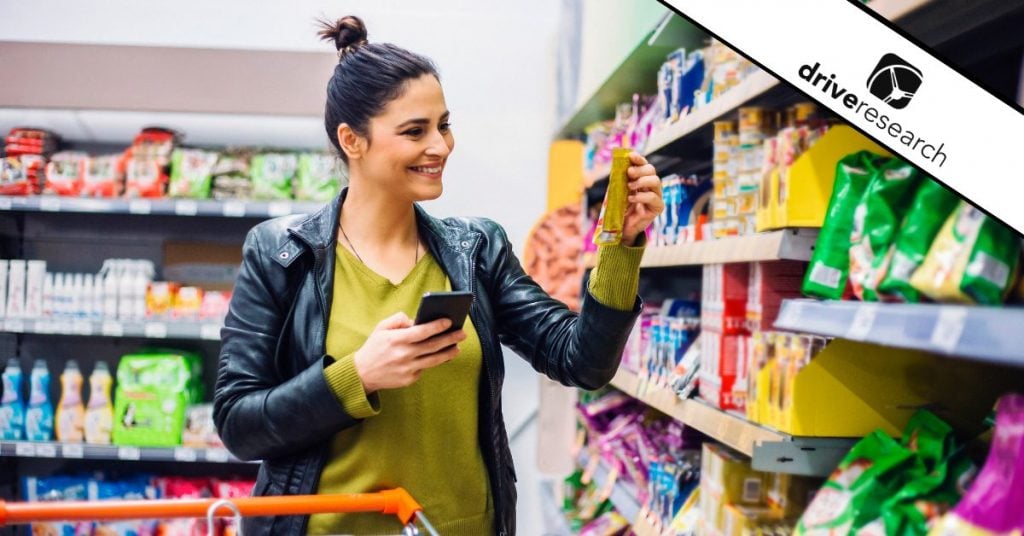
Shelf testing market research is a fantastic way to gauge the interest consumers have in products by measuring their in-store appeal.
Using different market research methods, businesses can gather important feedback around packaging, arrangement, and other stylistic features that can impact purchasing decisions.
In this post, we will cover the basics of shelf testing market research and an inside look into how to recruit participants. Keep reading!
What is Shelf Testing Market Research?
Shelf testing market research evaluates the impact of how products are displayed on shelves within a store.
The goal is to recreate what the in-store shopping experience is like for customers, and how that ultimately plays a role in their purchasing decisions. Aside from understanding consumer preferences and behavior around the products, shelf testing also helps assess other factors like visibility and product attractiveness.
Common forms of shelf testing market research include eye tracking, surveys, and even simulations in certain cases. The chosen method will depend on the needs of the client and type of product, along with some other relevant factors.
Importance of Conducting Shelf Tests
Shelf tests play a crucial role in market research for consumer packaged goods (CPG) companies. Below, we’ll cover the top reasons why they are so important for brands to invest in.
Assessing Visibility and Impact
Conducting shelf tests will help brands understand how their products appear visually to consumers. Customers tend to purchase products that are not only quality, but that have an appealing layout while on the shelves.
Gaining insight into these factors like visibility along with shelf positioning will help brands improve how they display their products. This has a direct impact on the purchasing decisions of customers.
Measuring Consumer Behavior
When conducting shelf testing market research, businesses will be able to measure consumer behavior.
Gathering data on this is key, as it will help brands determine which products catch the eye, how long consumers spend examining different options, and which attributes influence their purchase decisions.
Testing Packaging Design
Another benefit of shelf tests is their ability to reveal data around product packaging.
Brands will be able to assess areas of interest like packaging aesthetics, readability of labels, and the overall attractiveness of the packaging to consumers.
Comparing Against Competitors
Shelf tests can also be used to deliver brands with competitor insights.
This information will tell brands how their rivals rate when it comes to product visibility, arrangement, packaging, and so on. After learning this important data, brands can work on making their own products stand out even more.
Optimizing Assortment and Placement
Using shelf tests, brands can determine the optimal assortment of products to offer and the most effective placement within retail environments.
Not only does this ensure that the product lineup aligns with consumer preferences, it also helps maximize sales potential as well.
Forecasting Sales Performance
Shelf tests are great for simulating real-world shopping scenarios.
Because of this, they provide essential data for brands trying to forecast sales performance. Additionally, it can also help with, predicting market share, and identifying potential sales opportunities
Iterative Improvement
Allowing companies to test variations of packaging, pricing, promotions, and other factors, shelf tests facilitate iterative improvement.
Using this type of iterative approach helps to refine products and marketing strategies, better meeting consumer needs and preferences.
Cost-Effective Testing
Conducting shelf tests is often a cost-effective method to gather insights compared to larger-scale market launches or extensive consumer surveys.
Allowing brands to test hypotheses, they can gather feedback in a controlled environment before making broader business decisions.
Shelf Testing Project Overview
A local product and packaging design company partnered with Drive Research, a national consumer packaged goods research company, for a recruitment study in the Central New York region.
Our client wanted to understand consumer behaviors and purchasing behaviors as it relates to drinking coffee.
A total of 16 participants were required to complete an in-person shelf-research interview at the client’s local facility.
A total of 16 participants were required to complete an in-person shelf-research interview at the client’s local facility. Drive Research recruited and qualified 19 participants to ensure 16 of those recruited would participate. Our qualitative recruitment firm recommends recruiting more participants than necessary to compensate for last-minute cancellations.
Be sure to have a plan B for participants who back out late because of coronavirus concerns, such as offering a virtual way to participate, if needed.
Qualified participants of the project received a $125 stipend upon completion of the in-person interview. The high stipend helped with earning full participation.
People are more likely to participate in research if they are rewarded for their time and feedback. A more substantial incentive can also outweigh minor concerns about participating in in-person during the pandemic.
Here are three quick overall tips concerning market research recruiting.
Criteria for the Shelf Testing Interviews
The qualitative recruitment focused on the following criteria for the in-person shelf testing project:
- Adults aged 22 to 65 who live in Central New York
- Must have a household income of at least $30k
- Must not work in a conflicting industry like food and beverage
- Must have drunk coffee that was made at home in the past month
- Must share some responsibility in shopping for packaged coffee
- Must have purchased packaged coffee from a grocery store or mass merchandiser in the past 6 months
- Must plan to do most grocery shopping in-store
- Must be willing to participate in person and cooperate with COVID-19 screening upon arrival (taking temperature, brief health survey, etc.)
Recruitment Process for the Shelf Testing Research
After the local product and packaging design company agreed to the proposal sent by Drive Research, our CPG research firm held a quick project kickoff meeting with the client.
After the kickoff meeting, Drive Research programmed a client survey screener that addressed the criteria referenced above. If needed, a market research firm should also help with the designing phase of the recruitment screener.
The Process of Recruiting Coffee Drinkers
The process of recruiting coffee drinkers to participate in the qualitative study was two-fold.
Step 1: Drive Research used paid randomized social media ads to those who lived in the target market and met the screening criteria.
Step 2: Our market research firm has also built an in-house panel, which allows us to send email invites to those who match the target criteria.
Both the paid social media advertisements and the email invitations sent recipients to the screener survey.
Screening for Recruitment Quotas
The online survey removes any respondent who does not meet the criteria standards set by the product and packaging design company.
Those who qualify for the pre-screen survey are screened again by phone to verify they meet the correct credentials. Once confirmed, the facility details, including sanitization protocols, were shared with each participant.
All qualified respondents were sent a confirmation email, follow-up reminder phone calls, and a text message the day of their in-person interview at the client’s facility.
Conduct Shelf Testing Market Research With Us
Interested in conducting in-person or in-store shelf testing for a product? Drive Research, a national market research company, is ready to help! Our team has worked with brands from across the country.
Drive Research provides unique insights to drive data-driven decision-making and product design.
To learn more about our services, get in touch today!



